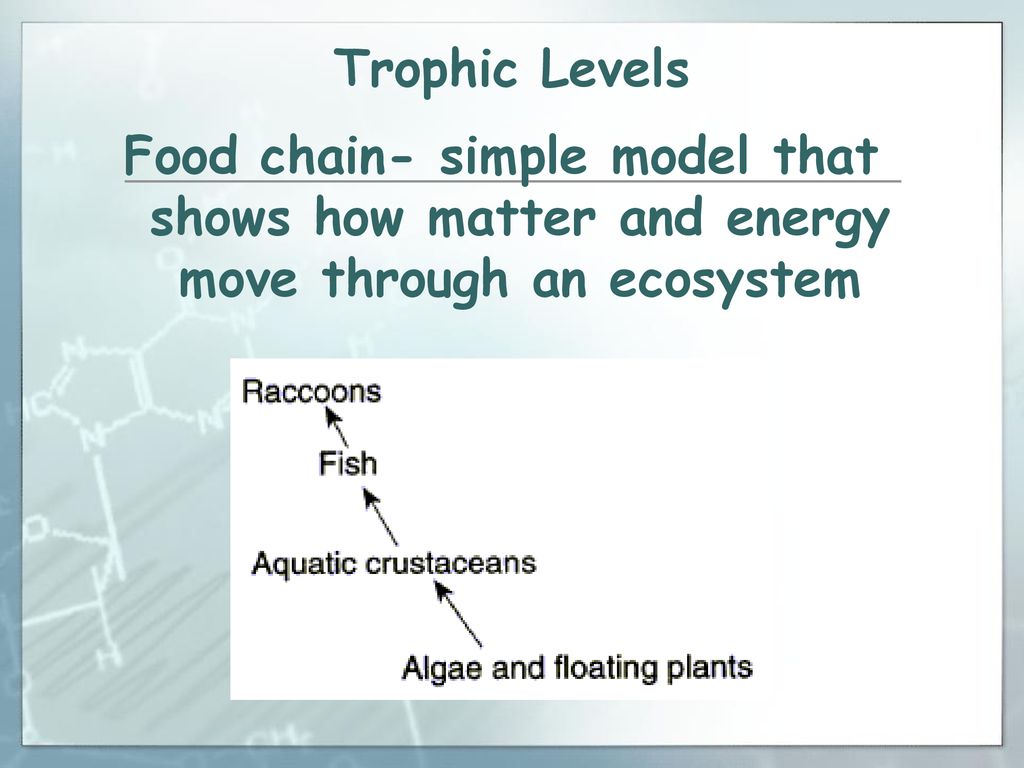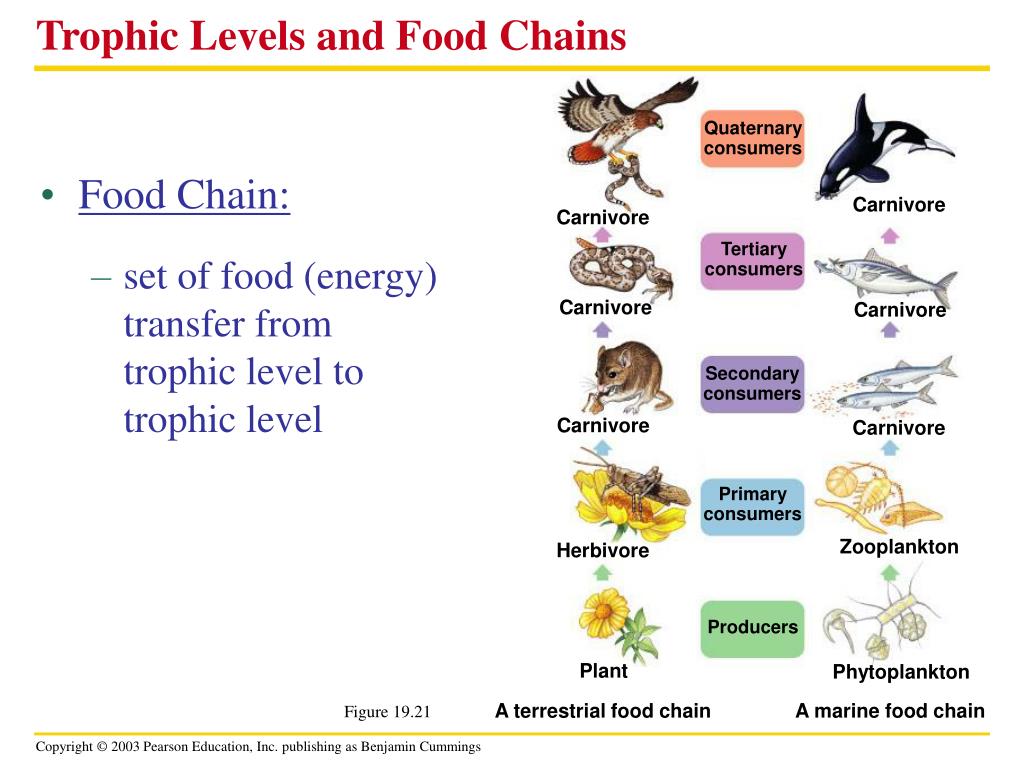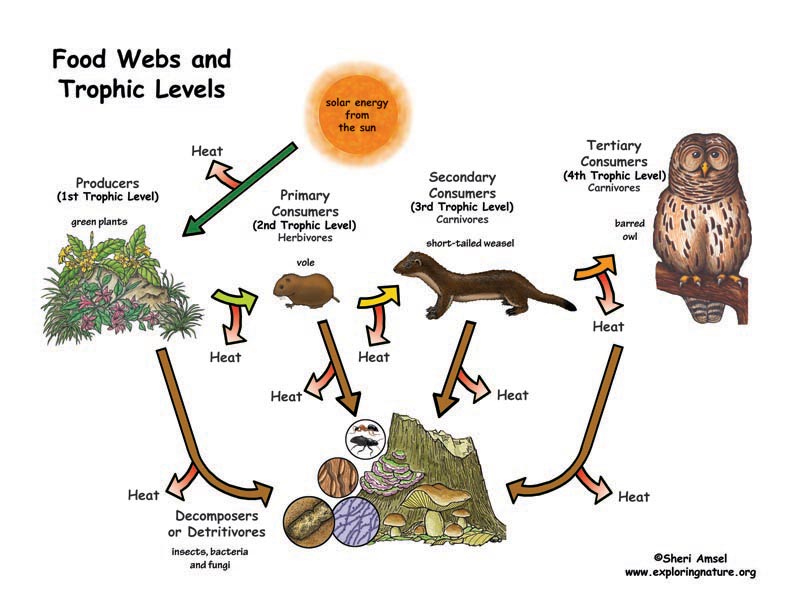Agenda Bellringer 5min Introduction 5min Review slides 10min Biology Diagrams Sometimes scientists describe each level in a food web with a trophic level. Here are the five trophic levels: Level 1: Plants (producers) Level 5: Animals at the top of the food chain are called apex predators. Nothing eats these animals. Activities. Take a ten question quiz about this page. Listen to a recorded reading of this page: Your

All food chains start with the producer, which occupies the bottom of the food chain and thus is at the first trophic level. All food chains end with the apex consumer, whose trophic level depends on its prey. For example, it is at the third trophic level if it consumes a primary consumer. If it feeds on a tertiary consumer, it is at the fourth

9.3: Food Chains and Food Webs Biology Diagrams
The trophic level of an organism is the number of steps it is from the start of the chain. A food web starts at trophic level 1 with primary producers such as plants, can move to herbivores at level 2, carnivores at level 3 or higher, and typically finish with apex predators at level 4 or 5. The path along the chain can form either a one-way

There is a single path through a food chain. Each organism in a food chain occupies a specific trophic level (energy level), its position in the food chain or food web. In many ecosystems As a result most communities are limited to 4 or 5 trophic levels. Figure \(\PageIndex{3}\): The relative energy in trophic levels in a Silver Springs

Definition, Examples, & Facts Biology Diagrams
Trophic Levels: The Layers of a Food Chain. Each step in a food chain corresponds to a trophic level, which represents a position in the sequence of energy transfer. Trophic levels help us categorize organisms based on their role in the ecosystem and the type of energy they consume. Here's a breakdown of the primary trophic levels: A trophic level is the group of organisms within an ecosystem which occupy the same level in a food chain. There are five main trophic levels within a food chain, each of which differ in their nutritional relationship with the primary energy source. The primary energy source in any ecosystem is the Sun (although there are exceptions in deep sea ecosystems).
